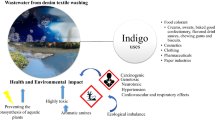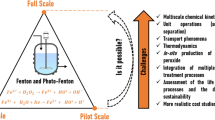Abstract.
Diclofenac, a common drug, was subjected to degradation studies using river biofilms grown in rotating annular reactors. Degradation of diclofenac was possible after acclimatisation as confirmed by liquid chromatography-mass spectrometry analyses. Adapted biofilms showed that degradation down to 10–25% of the initial concentration could be achieved within 4 days. In situ observation by confocal laser scanning microscopy, however, revealed slow biofilm development in the presence of diclofenac compared with control experiments grown in river water only. This was substantiated by low cell counts and isolation of fewer kinds of microorganisms from diclofenac-grown biofilms. Fluorescent in situ hybridisation analyses confirmed the presence of various bacterial groups, especially those belonging to the Cytophaga-Flavobacterium and γ-Proteobacteria groups, in the biofilms. Quantification of image data indicated a negative effect of diclofenac on the growth of bacteria and algae. This is the first report on degradation of diclofenac by lotic biofilms.
Similar content being viewed by others

Author information
Authors and Affiliations
Additional information
Electronic Publication
Rights and permissions
About this article
Cite this article
Paje, .M., Kuhlicke, .U., Winkler, .M. et al. Inhibition of lotic biofilms by Diclofenac. Appl Microbiol Biotechnol 59, 488–492 (2002). https://doi.org/10.1007/s00253-002-1042-4
Received:
Revised:
Accepted:
Issue Date:
DOI: https://doi.org/10.1007/s00253-002-1042-4



